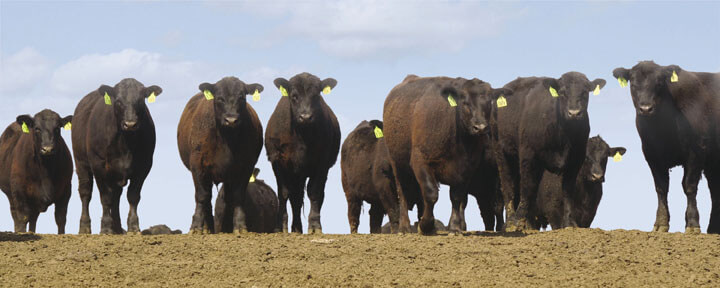GAR Steers Ring Up Big Grid Premiums
It’s the beginning of a new decade, and what better way to step into the future than with cattle that ring up BIG grid premiums and leave “industry average” so far behind you can barely see it. On January 4, 2010, GAR harvested 37 home-raised steers (cull bulls and some research steers) at the Liberal, KS National Beef Plant after finishing at Triangle H Feedlot in Garden City, KS. These cattle netted $166.52 per head in total premiums over the live market, bringing an equivalent live price of $96.95 per cwt, when the same-week average market in Kansas was only $84.02 (a $12.93 per live cwt. advantage).
This group of steers stood out even by U.S. Premium Beef (USPB) standards on whose grid they were marketed. During Fiscal Year 2009, USPB reported that the average animal sold on their grid earned almost $32 above the average cash market. The top 25% largest premium getters earned $68 per head. That is solid performance, but the GAR steers bested the top quartile cattle by well over 200%. “You won’t see many premiums that large anywhere in the industry,” says Mark Gardiner. “It’s a strong statement about what is possible with years of hard work and stacking generations of the right genetics. For producers who would like to earn significantly more on their cattle, results like this prove it can be done.”
The table below details how these GAR steers earned such large premiums. First, their quality grade was outstanding with 34.6% Prime carcasses and 100% grading Choice or higher (zero Selects or Standards). Quality grade premiums alone brought in an extra $65.77 per head.
| Premium on GAR Steers by Category (per head) | |
| Quality Grade | $ 65.77 |
| Dressing Percentage* | $ 59.66 |
| Age and Source Verified | $ 35.00 |
| Branded Beef | $ 15.52 |
| Yield Grade | $ (9.43) |
| Overall Advantage vs. Live Market | $ 166.52 |
| *No direct premium is paid for above average dressing percent. However, higher dressing percentages do mean more carcass pay weight per pound of live weight, which results in more total dollars per head compared to selling cattle on a live weight basis. | |
Next is dressing percentage, also called carcass yield, because it is defined as carcass weight as a percentage of live animal weight. Dressing percentages around 64% are considered average in Kansas packing plants, but the GAR steers dressed out significantly higher at 67.1%. Thus, for every 100 pounds of live weight, these cattle produced an extra 3.1 pounds of salable carcass. If the GAR steers had been sold on a live weight basis, their superior carcass yield would not have benefited the seller. On a grid, however, the value of these added pounds paid an extra $59.66 per head.
Age and source premiums contributed another $35 per head. Brand qualification for Certified Angus Beef® and National Beef’s own brand, Black Canyon® Premium Reserve, brought in still more premiums---$15.52 more per animal. Six head of Yield Grade 4 carcasses did result in a modest yield grade discount, but the overall results were so outstanding, they’re definitely worth talking about. A $166.52 per head premium above the prevailing market made these cattle big time winners!
“Some people wonder if it is even possible to earn a meaningful premium in the cattle business,” Gardiner notes. “These cattle give producers a roadmap to follow. They prove that sizable premiums and improved profitability can be a reality for those willing to invest in proven, value-oriented genetics.”
